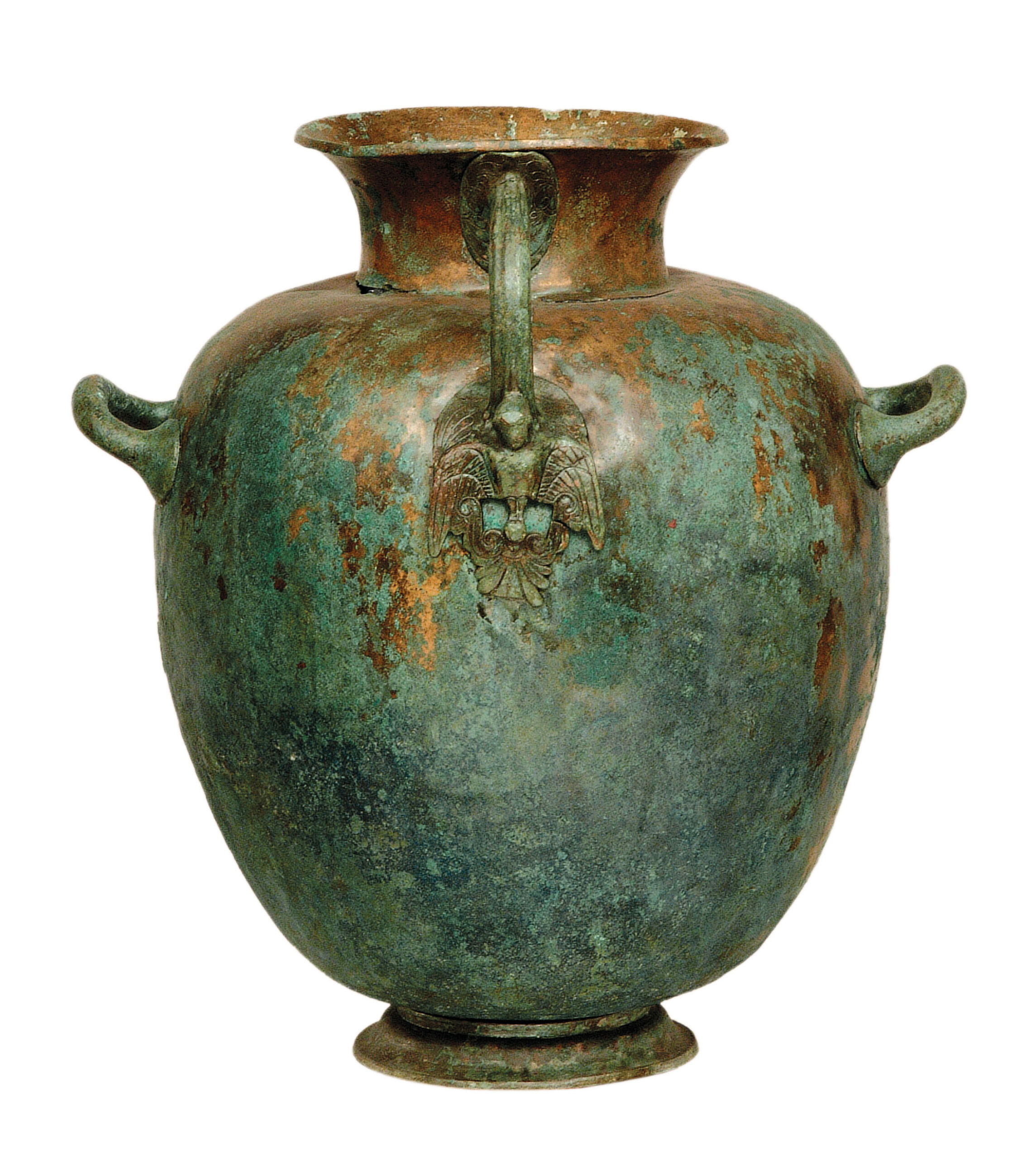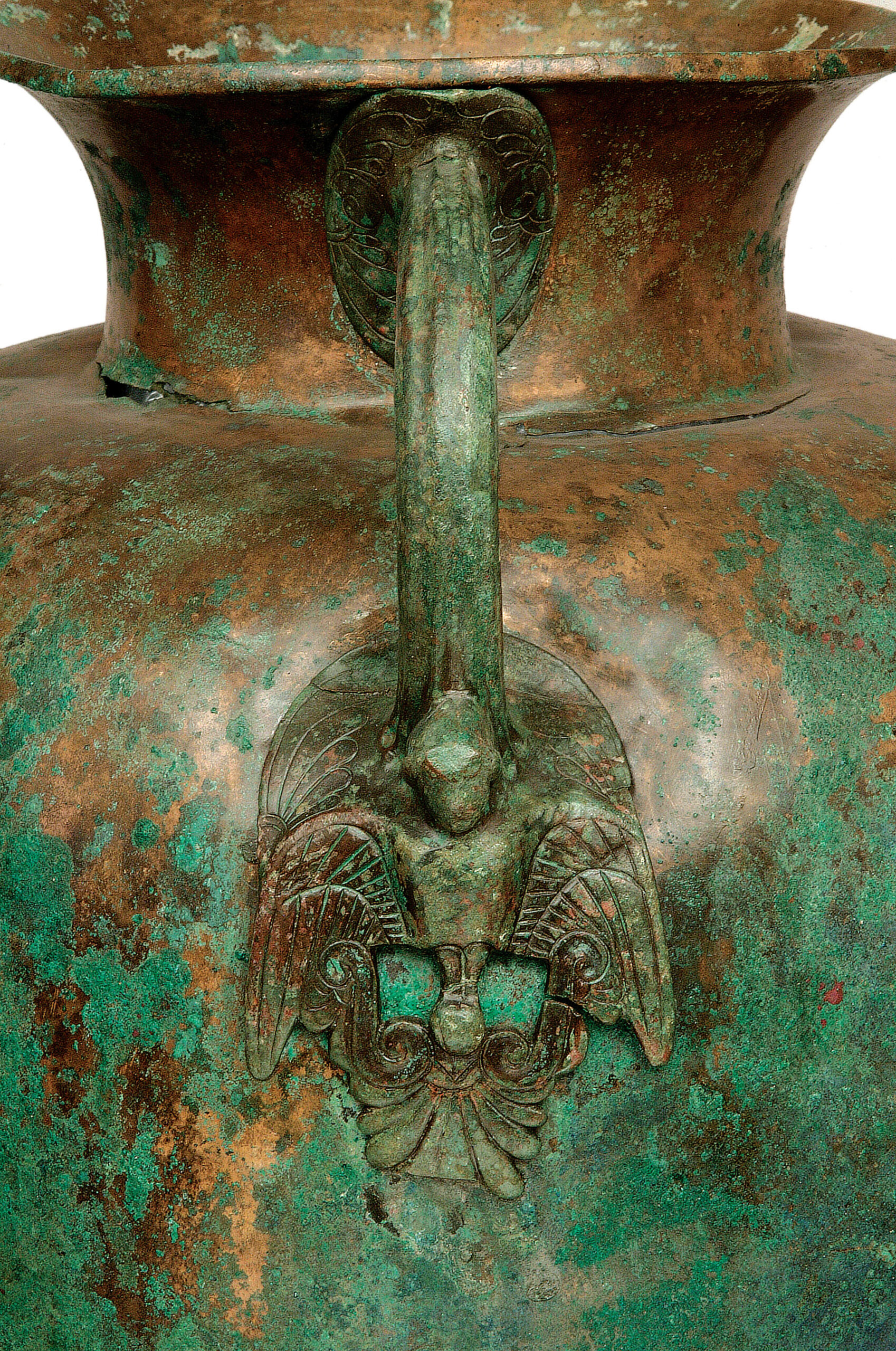



The ring of the base and the handles are cast and joined to the body, which is oval in form. Neck short and wide, spreading toward top to everted mouth. The horizontal handles are round in section and are discoid at the point of attachment.
The vertical handle is fluted on the outer side. The upper, flat attachment is oval in outline. On each side of the handle it has two finely executed palmettes, placed sideways with a common stem and spiral between them. The upper part of the lower attachment, is likewise flat, semicircular in outline and also has a decoration of palmettes, placed separately one above each wing of the siren. The mythical creature is frontal, with drooping wings in low relief. Her head rests against the handle stem; her hair forms a stephane framing her face. Her sharp claws grasp a sphere that forms the core of a pendant palmette with nine fronds and double spirals that rise to enclose the creature’s wings, forming a closed ellipsoidal unit. Both palmettes and spirals form a balanced composition. Details of the wings and hair are incised.
The hydria belongs to a group of hydrias characterized by the following features. The vertical handle rests against the rim and shoulder, the slightly concave neck makes a right angle with the shoulder, which curves into the line of the body. All three handles are round in section and end in disk-like attachments. Similar are the two hydrias of the Hermitage Museum, which come from a workshop in the Crimean region.
PUBLICATION
Adreiomenou A. C. 2006. Cat. no. 129, in Choremi-Spetsieri Α. – Zarkadas Α. (eds), The Paul and Alexandra Canellopoulos Museum. Ancient Art, Athens, 208-209.